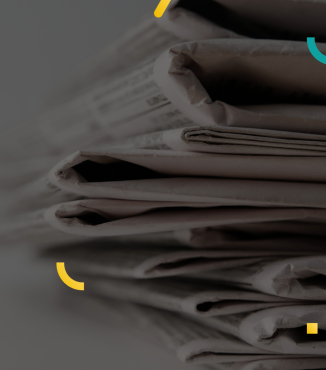Missive’s “Seat at the Table” is an initiative focused on creating a safe space for individuals to come together to learn and expand our thinking when it comes to DE&I. In this latest episode, our Head of DE&I Consulting, Whitney Simon sat down with Google DeepMind’s Jai Clarke-Binns to explore intersectionality in the workplace.
After studying a curation degree, Jai began his career in HR, focussing on Centre of Excellence roles before moving to more generalist roles. Around 2015, after noticing a lack of conversation in the DE&I space about the experiences of black people, or queer people, Jai took ownership, and focused on highlighting, inspiring and connecting people of colour in the creative sector.
Since then, Jai ran a DE&I consultancy working with high innovation organisations, and eventually went on to join Google DeepMind as a DE&I partner.
You can listen to the full podcast at the bottom of this article.
What is intersectionality?
Originally coined by American Civil Rights Advocate, Professor Kimberlé Crenshaw in her 1989 paper, “De-marginalising the Intersection of Race and Sex”, intersectionality is the concept to describe the multiple forms of discrimination faced by black women. Since then, the term has been expanded and evolved to apply to various identities, and it's an increasingly important topic and DE&I lens that many people are trying to incorporate to truly create an inclusive culture.
“It’s important to look at intersectionality a bit like colours. If you have blue and you have red, it makes purple. That’s something completely different. It’s not blue and it’s not red. It’s purple.”
What are some of the experiences from those with multiple marginalised identities?
One of the biggest challenges raised in the episode, was the idea of empathy from leaders within their organisations. As Jai explains, leaders are time poor, and as they fire from all cylinders trying to make decisions to better the health and longevity of their organisation, the topic of intersectionality and its nuances can arguably make the situation more complicated.
If leaders cannot grasp, or enter the conversation easily, those affected may shy away from those topics as they struggle to express what’s happening to them in the workplace.
In some cases, those affected avoid topics like race out of fear of being viewed as a troublemaker bringing up uncomfortable conversations – a disparaging outcome which often impacts one’s mental well-being.
What can leaders do to support those with multiple marginalised identities?
-
Create a shared vocabulary amongst your team
Through training, an organisation can establish a shared vocabulary amongst all your employees, meaning that everybody understands the terms, and how they’re supposed to be used, and not be used. Currently, many organisations don’t do that and run the risk of words being weaponised.
This enables leaders and individuals to feel like they have permission to give feedback on the terms when they’re not correct, because the organisation has determined what they believe is appropriate and it’s cascaded down.
-
Practice allyship
Leaders must realise their power and their influence to shape a company culture. They can shape the context in which employees have to navigate within. Too often, managers see things and they don't intervene. Organisational leaders can use their power to create safe spaces, drive accountability, and advocate for inclusivity.
-
Move away from “best practices” and talk “baselines”
Best practices is a linguistic trap. The term insinuates that there are “good practices”, and “best practices”, and there’s no room for improvement.
Usually, best practices involve systems or processes that are due for some change and some innovation. Instead, establishing a “baseline” is an effective way of thinking about the work. Leaders should ask themselves, how can we continue iterating, building, improving?
At Missive, we support organisations to take a long term, strategic approach to DE&I across the entire organisation. If you’re looking for support, contact us today, or sign up to our Diversity Digest.
The full transcript of the episode can be found here.




